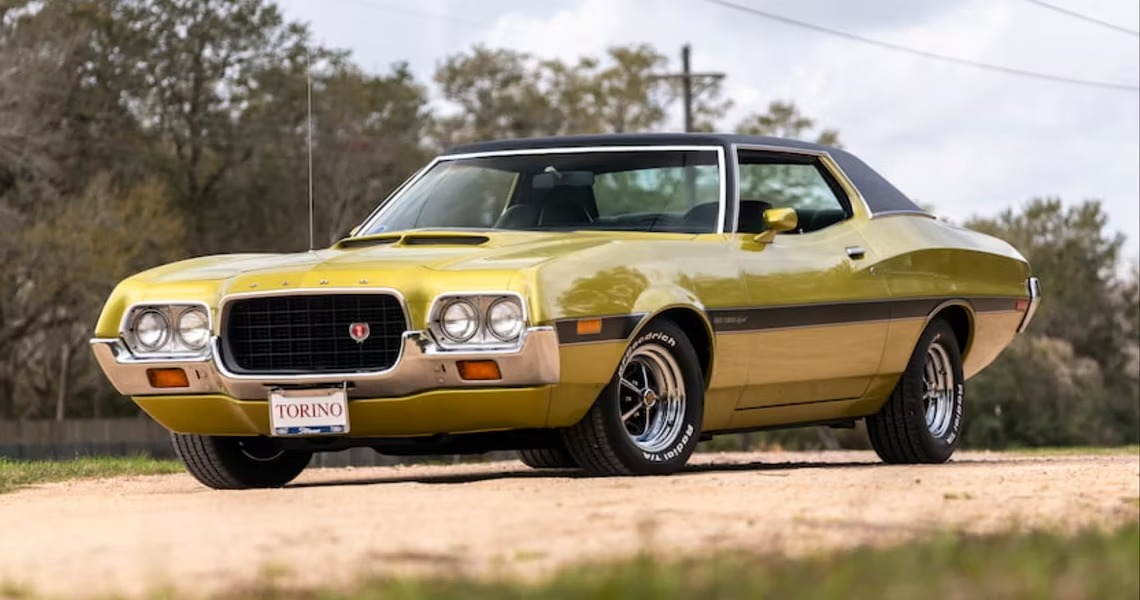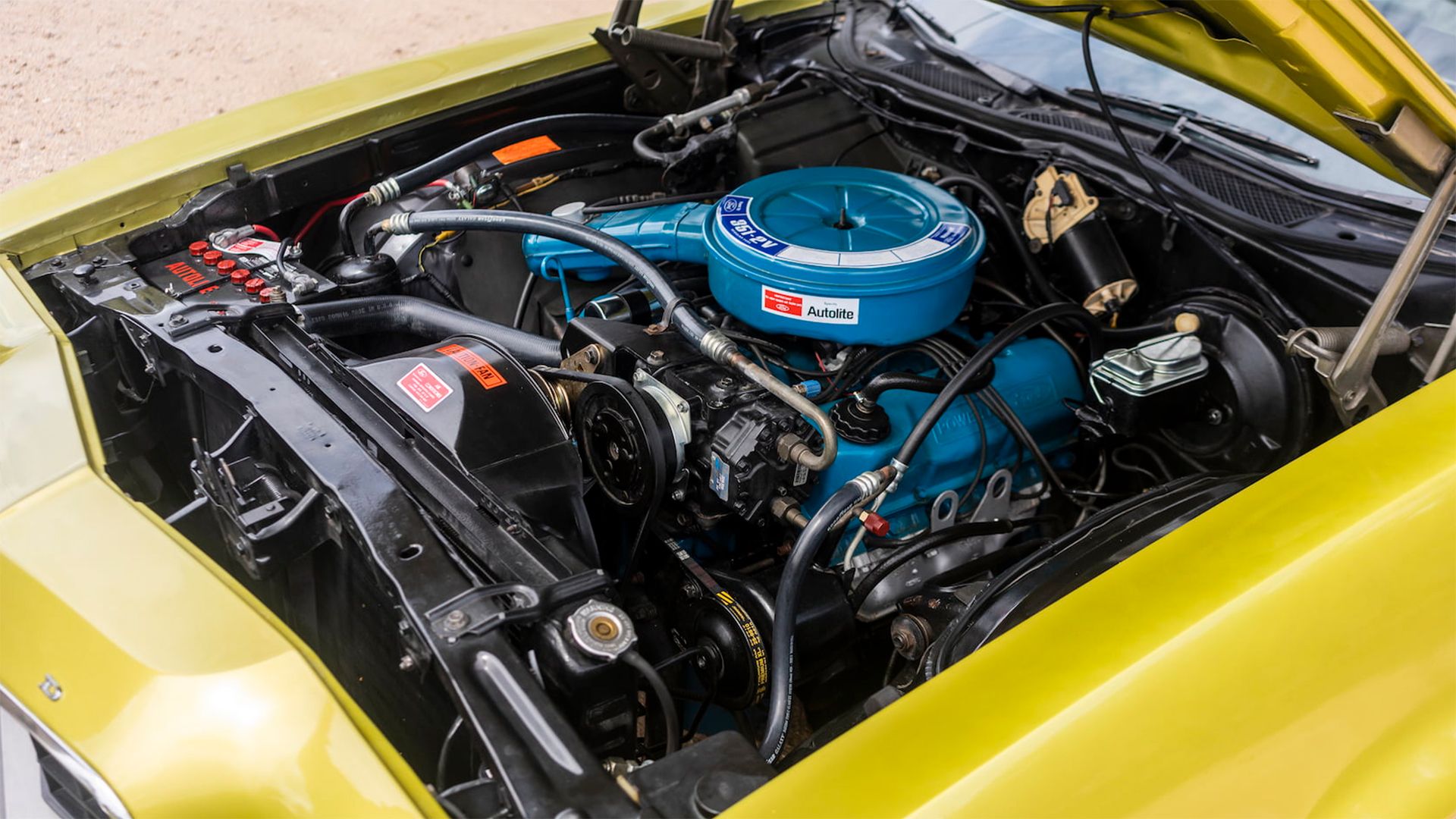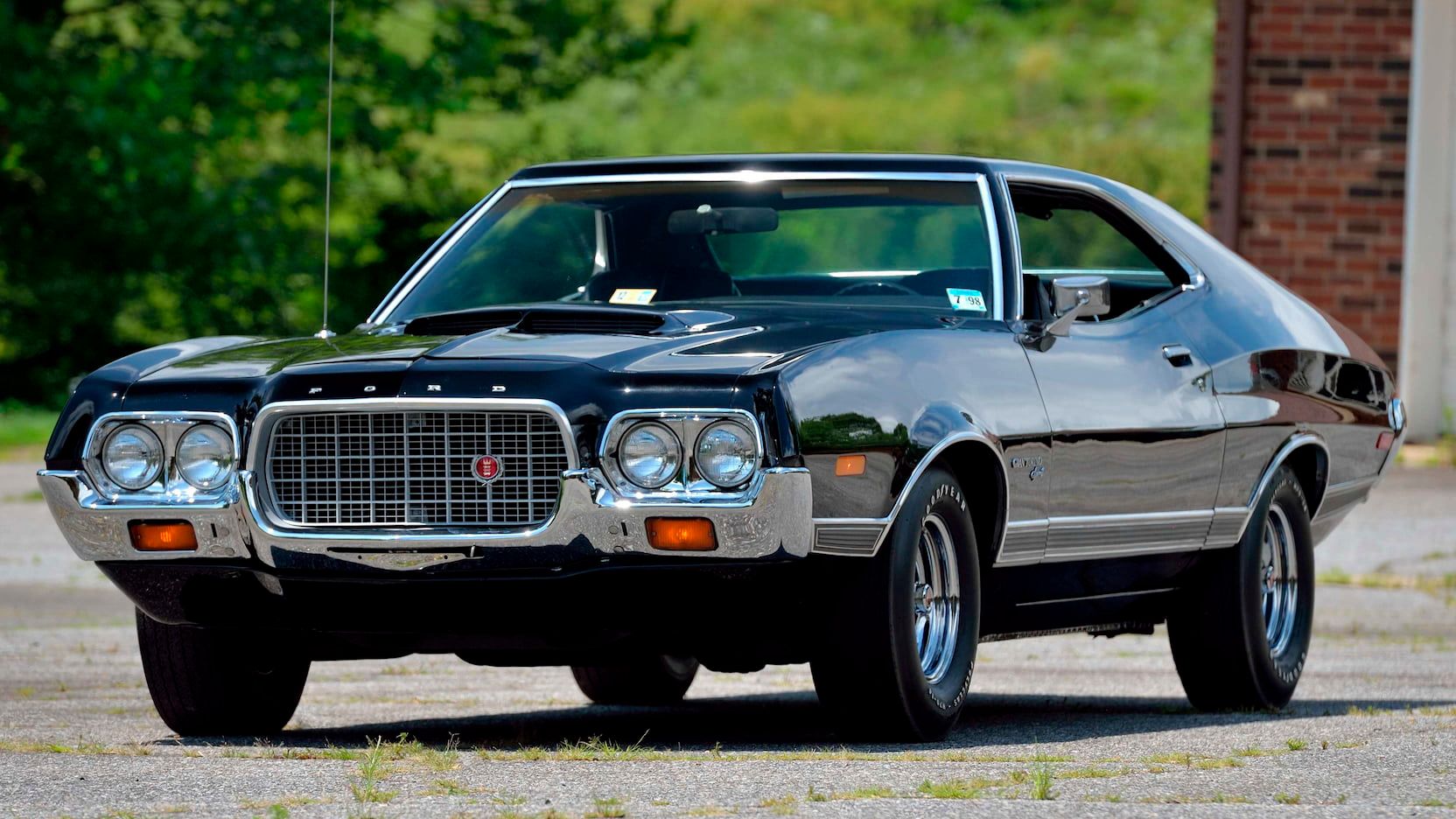1972 marked the beginning of the Ford Torino’s third generation, featuring the range-topping high-performance Gran Torino Sport.

During a short period, from 1968 to 1976 to be exact, Ford’s flagship mid-size car was the front engine, rear-wheel drive Torino. It looked like a performer right from the beginning, and despite most variants being nothing but family haulers, Ford definitely made some muscly versions along the way.
One of them was the third-generation 1972 Gran Torino Sport, the Torino’s range-topping high-performance trim, complete with more power, an improved chassis, and aggressive looks to go alone. With rivals such as the Chevy Impala and the Dodge Charger – all affected by the ongoing Malaise era, Ford and its Gran Torino Sport still managed to capture the American Muscle essence despite government restrictions.
In hindsight, the 1972 Ford Gran Torino Sport might not be as memorable as many other historic muscle cars that weren’t affected by fuel requirements, but that doesn’t mean we can’t shine the limelight upon it for just a while at least. Here’s everything you should know about the ‘72 Ford Gran Torino Sport.
The 1972 Gran Torino Sport Was More Powerful Than You Might Think
In 1972, the U.S. government tightened up emissions regulations, forcing most manufacturers to lower the compression ratios and overall size of their engines. Ford wasn’t an exception, and as a result, the compression ratios for the Torino’s entire lineup were significantly lowered, inevitably translating to reduced power outputs.
As was common at the time, Ford made a whole series of engines available for the 1972 Gran Torino Sport – which replaced the GT high-performance name for the new generation and model year. Skipping the base model’s underwhelming inline-six cylinder, the Gran Torino Sport’s standard mill came in the form of a 302 cubic-inch Windsor V8 capable of generating 140 horsepower and 239 pound-feet of torque.
For an extra $45, buyers could opt for an upgraded 351 CI Cleveland V8 with 161 horsepower and 276 pound-feet of torque, a no-brainer upgrade if you ask us. There was also a 400 CI 335 Series V8 with 168 horsepower and 297 pound-feet. Then came the best of the bunch, a 429 CI 385 Series V8 capable of generating 205 horsepower along with 322 pound-feet of torque, or a 351 CI Cobra Jet with 248 horsepower and 299 pound-feet of torque.
The Cobra Jet 1972 Ford Gran Torino Sport was a quick pony, able to blast from 0-60 mph in just 6.9 seconds while on its way to a top speed of 140 mph. In fact, it’s believed that Ford was actually quite conservative with its power rating of the Gran Torino Sport’s engine outputs. When you pair that with the fact that SEA horsepower ratings had been somewhat revamped, it’s very possible that the model was actually way more powerful than it was actually given credit for.
The 1972 Ford Gran Torino Sport: Transmission And Chassis
As with its engines, the ‘72 Ford Gran Torino Sport was on sale with an array of possible transmissions, but the selected engine played a part in which ones were specifically available. The base level 3-speed manual transmission was only available with the base engine, while three different automatic transmissions could pair with the rest of the lineup as options in some cases, and exclusively in others. The automatic transmissions all had three-speed SelectShift Cruise-O-Matic gearboxes, but they varied in terms of durability and capabilities. There was also an optional wide-ratio Toploader four-speed manual available with the Cobra Jet V8.
Moving onto the chassis, Ford threw everything it had at the 1972 Gran Torino Sport to get the most out of its performance. It had sports-tuned suspension with coil-sprung upper and lower control arms up front, as well as drag struts and hydraulic shocks. In the rear, it featured multilink coil springs also with hydraulic shocks. The result was a firm ride that took well to cornering, yet wasn’t harsh when driven normally. Additionally, Ford constructed the Torino on new body-on-frame underpinnings, featuring an energy-absorbing S-shaped front end for added road absorption. Steering was well weighted, and the Gran Torino Sports’ beefier brakes provide ample stopping power.
The 1972 Ford Gran Torino Sport Had A Premium Design
As the first fully-redesigned mid-size car from Ford in a handful of years, the 1972 Gran Torino Sport came with a fully-refurbished premium interior. It came standard with a front bench along with optional ComfortWeave upholstery, or upgraded bucket seats with a center console. The rest of the cabin featured lavish carpeting and feel-good materials, along with several comfort amenities and gauge displays.
Outside, the Gran Torino Sport displays a distinctive wide oval-shaped front grille with dual headlights and chrome trimming, as well as a hood scoop, flared fenders, and an overall attractive muscle-style body shape.











